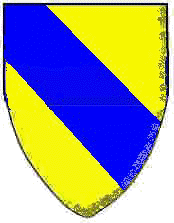| Theories of Descent | Gilbert | William |
THE NORMAN & PLANTAGENET PERIODS
| During the Norman and Plantagenet periods (1066
-1237) the county of Chester was ruled over by a succession of hereditary earls
starting with Hugh d'Avranches (known as Lupus - the wolf) in 1071 and ending
with his descendant John le Scot who died in 1237. Arguably the most powerful of
these so far as national affairs was concerned was Ranulf III (Blundeville). The
earl was assisted by his eight tenants-in-chief, his barons. These were: Halton,
Montalt, Malbank, Shipbrook, Kinderton, Malpas, Dunham and Stockport. Of these
the baronies of Shipbrook, held by the Vernon family, and that of Kinderton,
held by the Venables family, had a significance so far as the Bostocks were
concerned. Especially the Vernons for the manor of Bostock was part of their
barony and so the Bostocks would owe them service for their lands. |
|
| The Norman earls of Chester had almost sovereign
rights within their 'palatine' and the laws of England did not apply within the
county - this was an area of independent jurisdiction legally, militarily and
fiscally. During this period the line of the Bostock family is highly speculative. Indeed the link to Osmer the Saxon lord of Bostock, who is referred to in the Domesday Survey of 1086, is very uncertain. |
 Arms of Venables, Barons of Kinderton |
